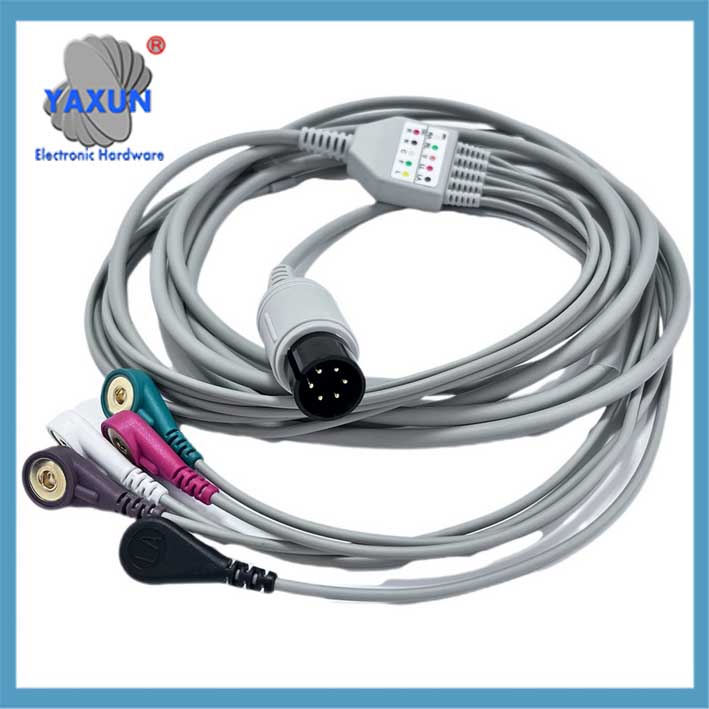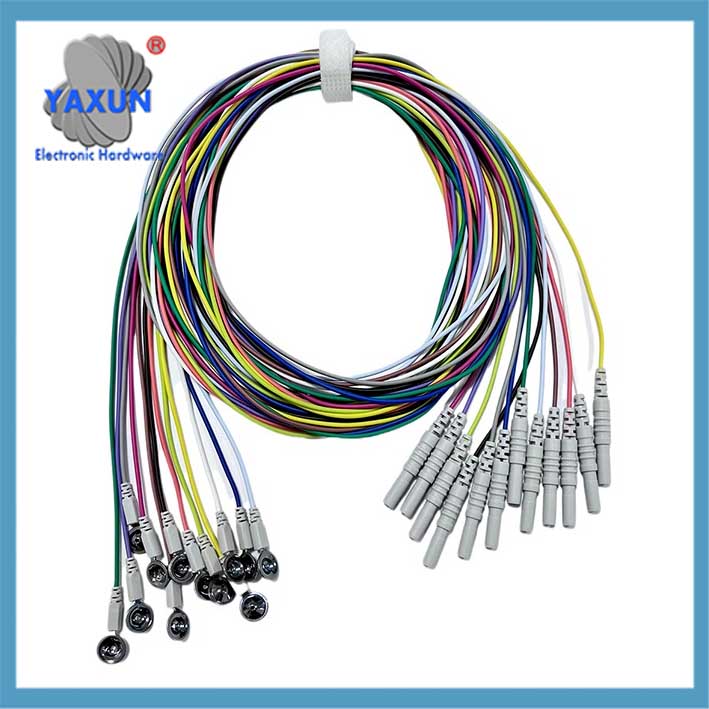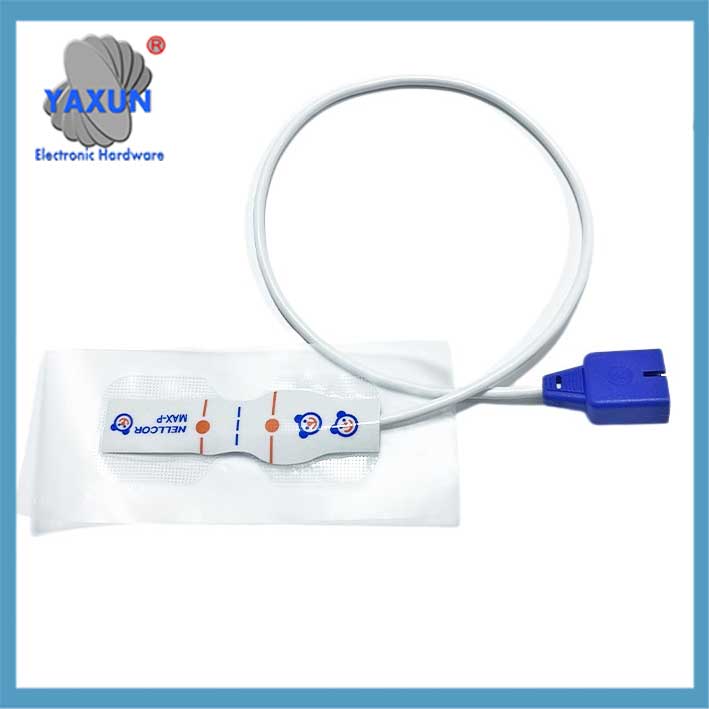Produktu kategorijas
- USB4 kabeļi 11
- Pogo pin kabeļi 10
- Ūdensnecaurlaidīgi kabeļi 28
- C tipa kabeļi un adapteris 40
- USB5 kabeļi 9
- USB skrūvju bloķēšanas kabeļi 26
- Savienotāji un kabeļi 18
- Pielāgota vadu instalācija 33
- Rumbas 47
- Elektronisko slēdža piegādātāji 5
- USB leņķa kabeļi 27
- Termināla antena 9
- Medicīniskie kabeļi 37
Produktu tagi
Kā izvēlēties pareizo medicīniskā aprīkojuma kabeli?
Pareiza medicīniskā aprīkojuma kabeļa izvēle ietver vairākus galvenos apsvērumus: drošību, sniegumu, izturību, un saderība ar ierīci un vidi. Medicīniskajiem kabeļiem jāatbilst īpašiem drošības standartiem, piemēram, IEC un UL izklāstītos, un jābūt izturīgam pret bojājumiem sterilizācijas un ilgstošas lietošanas rezultātā.
It is necessary to combine these points and give a structured answer. Piemēram, there are several major points: equipment compatibility, materials and structure, application scenarios, safety certification and maintenance, utt..
How to choose the right medical equipment cable requires comprehensive equipment characteristics, usage scenarios and industry standards, and decisions can be made from the following dimensions:
1. Equipment compatibility requirements
Model matching
It is necessary to confirm that the harness interface is fully compatible with the physical specifications of the medical device, for example, the blood oxygen probe of the monitor needs to match standard connectors such as GH1.5 or M12;
Monitors of different brands (such as Mindray, GE) may have different harness protocols, and the compatibility list provided by the manufacturer needs to be checked1.
Signal transmission requirements
High-frequency equipment (such as laser surgical instruments) needs to use wires with excellent shielding performance (such as tinned copper wire + metal shielding layer) to reduce electromagnetic interference;
Precision instruments (such as ECG) need to control the stability of harness impedance to avoid signal attenuation.
Safety Standards:
Ensure the cable complies with relevant standards like IEC 60601-1, which covers safety requirements for medical electrical equipment. Look for certifications like UL, CSA, and IEC.
Cable Type:
Determine if you need a power cord, a signal cable, or a data cable.
Savienotāja veids:
Choose connectors that are compatible with the equipment and meet the required durability and safety standards, such as those with high mating cycle ratings.
Jacket Material:
Select a jacket material that provides adequate protection, elastība, and resistance to sterilization processes.
Vairogs:
Consider the need for shielding to prevent electromagnetic interference (EMI) that could disrupt the performance of sensitive medical equipment.
Izturība:
Evaluate the cable’s ability to withstand repeated flexing, sterilization cycles, and exposure to chemicals and moisture.
Ergonomics:
Consider the tactile feel and flexibility of the cable for ease of use.
Flexibility:
For applications where the cable will be flexed frequently, choose a cable with a flexible jacket and appropriately stranded conductors.
Current and Voltage:
Ensure the cable can handle the current and voltage requirements of the device.
Garums:
Choose the appropriate cable length to minimize voltage drop and ensure sufficient reach.
Future Expansion:
Consider the potential for future upgrades and select a cable with sufficient capacity to accommodate them.
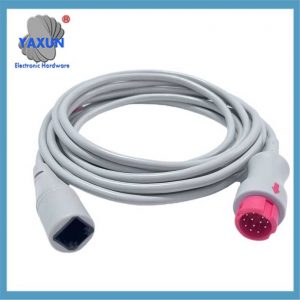 Mindray 12-pin invasive blood pressure cable to Abbott |
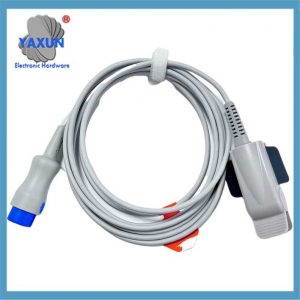 Mindray T8 repetitive blood oxygen saturation probe 7 piespraust |
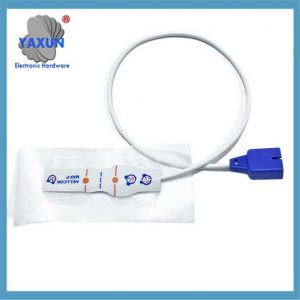 Pu Rui MPX-P children’s breathable membrane |
Ii. Material and structural design
III. Application scenario adaptation
Diagnostic/therapeutic equipment
The endoscope harness needs to have a diameter of ≤3mm and be resistant to bending, and is suitable for miniaturized instrument channels;
The hemodialysis machine harness needs to withstand repeated disinfection (ethylene oxide/high-temperature steam), and it is recommended to choose a TPE outer layer material.
Monitoring and portable equipment
The wearable device harness needs to weigh ≤20g/m, and use an ultra-soft silicone outer layer to improve wearing comfort;
The neonatal monitoring harness must comply with the ISO 10993 biocompatibility standard to avoid skin allergies.
IV. Safety certification and maintenance
Mandatory certification
Must pass ISO 13485 quality management system certification, and the wiring harness that contacts the human body must comply with the YY/T 0466 standarta;
Export products must meet the RoHS/REACH environmental directive, and some countries require UL certification.
Maintenance strategy
It is recommended to test the insulation resistance of high-frequency wiring harnesses (such as operating room equipment) every 3 months (standard ≥100MΩ);
The connector contact points need to be cleaned regularly with anhydrous ethanol to prevent oxidation from causing signal distortion.
 Brain electrode lead wire, gold disk electrode electromyography electrode connection cable |
 Nihon Kohden 10 vadu 26 kontaktu defibrilācijas vads |
 6P EKG integrēts piecu pievadu savienojuma kabelis |
V. Supplier screening suggestions
Customization capability: Prioritize companies that support reverse development of drawings, such as Yongrui Electronics, which can provide precision welding services for endoscope wiring harnesses;
Testing system: Check whether the supplier has full-process testing equipment (such as withstand voltage testers, bending testers);
Delivery cycle: Emergency equipment wiring harnesses need to select manufacturers with 48-hour expedited production capabilities, and the regular order cycle is ≤15 days.
Piezīme: Before purchasing, you should request samples for compatibility testing, focusing on verifying signal transmission stability and mechanical durability indicators.
Sazinieties ar mums
Gaidot jūsu e -pastu, Mēs jums atbildēsim 12 stundas ar nepieciešamo vērtīgo informāciju.
 English
English العربية
العربية bosanski jezik
bosanski jezik Български
Български Català
Català 粤语
粤语 中文(漢字)
中文(漢字) Hrvatski
Hrvatski Čeština
Čeština Dansk
Dansk Nederlands
Nederlands Eesti keel
Eesti keel Suomi
Suomi Français
Français Deutsch
Deutsch Ελληνικά
Ελληνικά עברית
עברית Magyar
Magyar Italiano
Italiano 日本語
日本語 한국어
한국어 Latviešu valoda
Latviešu valoda Bahasa Melayu
Bahasa Melayu Norsk
Norsk پارسی
پارسی Polski
Polski Português
Português Română
Română Русский
Русский Cрпски језик
Cрпски језик Slovenčina
Slovenčina Slovenščina
Slovenščina Español
Español Svenska
Svenska தமிழ்
தமிழ் ภาษาไทย
ภาษาไทย Tiếng Việt
Tiếng Việt
